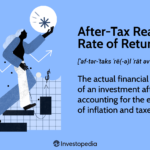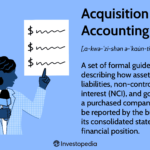What Is an A-B Trust?
An A-B trust is a joint trust created by a married couple for the purpose of minimizing estate taxes. It is formed with each spouse placing assets in the trust and naming as the final beneficiary any suitable person except the other spouse. The trust gets its name from the fact that it splits into two separate entities when one spouse dies. Trust A is the survivor’s trust and trust B is the decedent’s trust.
Key Takeaways
- An A-B trust is a joint trust created by a married couple; upon one spouse’s death, the trust splits into a survivor portion (the A trust) and a bypass portion (the decedent’s trust, or B trust).
- Via the split, the A-B trust effectively minimizes estate taxes and defers them until after the death of the surviving spouse.
- The surviving spouse has limited control over the decedent’s trust but the terms of the decedent’s trust can be set to allow the surviving spouse to access the assets, and even draw income from them.
- A-B trusts are no longer widely used as the estate tax exemption, which is now indexed to inflation, is sufficient for most estates.
Understanding an A-B Trust
Estate taxes can bite deeply into a deceased person’s assets. For example, consider a married couple that has an estate worth $20 million by the time one of the spouses dies. The surviving spouse is left with the whole $20 million, which is not taxed due to the unlimited marital deduction for assets flowing from a deceased spouse to a surviving spouse.
But then, the other spouse dies, leaving the money to their children. The taxable portion of the estate (the amount that exceeds the 2022 exemption threshold of $12.06 million will be $7.94 million). This means that $7.94 million will be taxed at 40%, leaving only $4.76 million for the beneficiaries. The exemption for 2023 is $12.92 million.
To circumvent the estate from being subject to such steep taxes, many married couples set up a trust under their last will and testaments called an A-B trust. In the example above, if the couple instead had an A-B trust, the death of the first spouse would not trigger any estate taxes as a result of the lifetime exclusion; however, a sum of money equal to the current exemption amount will be transferred into an irrevocable trust called the bypass trust or B trust.
This trust is also known as the decedent’s trust. The remaining amount, $7.94 million, will be transferred to a survivor’s trust, or A trust, which the surviving spouse will have complete control over. The estate tax on the A trust is deferred until after the death of the surviving spouse.
Benefits of an A-B Trust
The A trust contains the surviving spouse’s property interests, but they have limited control over the assets in the deceased spouse’s trust; however, this limited control over the B trust will still enable the surviving spouse to live in the couple’s house and draw income from the trust, provided these terms are stipulated in the trust.
While the surviving spouse can access the bypass trust, if necessary, the assets in this trust will bypass their taxable estate after they die. After the surviving spouse dies, only the assets in the A trust are subject to estate taxes. If the estate tax exemption for this spouse is also $12.06 million for 2022 (the exemption threshold for 2023 is $12.92 million) and the value of assets in the survivor’s trust is still valued at $7.94 million, none of it will be subject to estate tax.
The federal tax exemption is transferable between married couples through a designation referred to as the portability of the estate tax exemption. If one spouse dies, the unused portion of their estate tax exemption can be transferred and added to the estate tax exemption of the surviving spouse. Upon the death of the surviving spouse, the property in the decedent’s trust passes tax-free to the beneficiaries named in this trust.
This is because the B trust uses up the estate tax exemption of the spouse that died first, hence, any funds left in the decedent’s trust will be passed tax-free. As the decedent’s trust is not considered part of the surviving spouse’s estate for purposes of the estate tax, double taxation is avoided.
Net Worth and A-B Trusts
If the deceased spouse’s estate falls under the amount of their tax exemption, then it may not be necessary to establish a survivor’s trust. The unused portion of the late spouse’s federal tax exemption can be transferred to the surviving spouse’s tax exemption by filling out IRS Form 706.
While A-B trusts are a great way to minimize estate taxes, they are not used much today. They were popular in the decades around the turn of the 21st century when the estate tax—which hadn’t been adjusted for years—could be triggered on estates as small as $1 million or $2 million. Nowadays, each individual has a combined lifetime federal gift tax and estate tax exemption of $12.06 million in 2022, rising to $12.92 million in 2023.
So only people with estates valued over $12.06 million will opt for an A-B trust in 2022. With the portability provision, a surviving spouse can include the tax exemption of their late spouse, allowing up to $24.12 million as of 2022 and $25.84 million in 2023, which can be transferred tax-free to beneficiaries.
What Are the Benefits of an A-B Trust?
The benefits of an A-B trust include death tax exemptions, built-in trust protection, and the portability of exemption. Disadvantages include maintenance costs, complex structure, and the possibility of large capital gains taxes after both parties die.
Why Is an A-B Trust Obsolete?
A-B trusts aren’t completely obsolete but they are not as common as they once were due to changes in estate tax law, primarily the fact that a couple now has extremely high estate tax exemptions. A-B trusts are primarily used to reduce estate taxes between married couples.
What Is Another Name for an A-B Trust?
A-B trusts are also known as bypass trusts or credit shelter trusts. The goal of these trusts is to reduce estate taxes between married couples.



